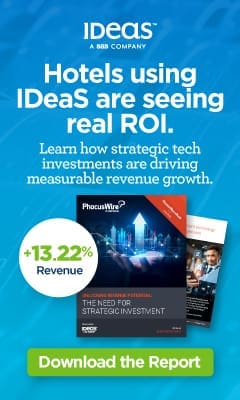 As hotels around the world gradually reopen following closures brought about by the COVID-19 crisis, they face the daunting challenge of balancing the need to bring guests back with the importance of keeping them safe and healthy. Hotels that reopen typically must adhere to strict guidelines around social distancing, cleanliness and sanitation, and reduced capacity across rooms and outlets. At the same time, competition among hotels for the returning business threatens to put downward pressure on rates. All of this translates into increased costs, thinner margins, and a slew of other financial and operational risks.
As hotels around the world gradually reopen following closures brought about by the COVID-19 crisis, they face the daunting challenge of balancing the need to bring guests back with the importance of keeping them safe and healthy. Hotels that reopen typically must adhere to strict guidelines around social distancing, cleanliness and sanitation, and reduced capacity across rooms and outlets. At the same time, competition among hotels for the returning business threatens to put downward pressure on rates. All of this translates into increased costs, thinner margins, and a slew of other financial and operational risks.
Is there silver lining to be found? Hotels may certainly struggle to identify areas of opportunity but there are ways – as we detail below.
Capacity constraints
Let’s focus on the general topic of capacity and try to understand the impact of operating at less than 100% of physical capacity. A number of potential factors may influence this:
- Social distancing restrictions that mandate a hotel must leave a certain number of rooms empty; this may even be based on the physical location of the rooms, e.g. occupying every other room on a floor rather than closing entire floors
- Alignment with restrictions on other on-property offerings – for instance, if restaurants or a casino floor are only be permitted to be half-full, a hotel may not want to create a situation in which it can’t accommodate hotel guests, or else detract from the guest experience
- Staffing levels for housekeepers that might result in closing a certain number of floors completely; likely an economic decision based on when marginal revenues no longer cover the cost of turning a room
- Hotels that are instituting the safety requirement of waiting 24-72 hours (typically) until a housekeeper may enter a room to clean it
While all will have some degree of financial impact, the last of these factors potentially has the most interesting effect. Consider a hotel with a two-night average length of stay. A 24-hour waiting period for housekeepers effectively reduces average capacity by 33%, meaning that the highest achievable occupancy over time is 67%. A 72-hour waiting period translates into a maximum occupancy of only 40%. What’s more, arrival and departure patterns could make the actual effective capacity vary significantly from night to night. And this is before imposing other constraints that stem from the first two factors above.
Why is it important that hotels have a solid understanding of their effective capacity? In revenue management this is also known as “yieldable” capacity – the number of rooms you have available to sell to transient customers on any given night. This is different from “physical” capacity, which corresponds to the total number of rooms in your hotel. It’s not unlike a situation where you have a large group block on the books that creates compression and changes your strategy for how you price and manage the remainder of your inventory for transient customers. The larger the group block, the more likely it may be that you yield rates and availability more aggressively.
Despite what is expected to be low demand for hotels for the foreseeable future, hotels may find themselves in these same kinds of constrained situations, forced to turn away guests from time to time as things continue to ramp up. Each instance of this could represent a lost opportunity if a hotel is not careful; it is still important to ensure that only the most profitable and valuable customers have access to scarce remaining sellable inventory, even if all rooms are not physically occupied.
Pricing
Hotels do need to tread carefully with respect to guests’ perception of pricing and fairness – travelers are very aware of the current situation hotels are in right now and will be sensitive to any semblance of price gouging. But at the same time, hotels have a fiduciary responsibility to stakeholders and still need to maximize profits whenever possible. Perhaps the best goal is to optimize risk-adjusted return – that is, balancing ROI with fostering the strongest possible long-term relationships with guests.
At the very least, these capacity constraints may help hotels avoid the infamous “race to the bottom” when competition on price inevitably becomes fierce within a market. Data from past crises has shown that hotels that engage in this and experience declines in ADR are typically the slowest to recover from a RevPAR perspective. Therefore, it is vital for hotels to distinguish situations where they need to take competitive pricing actions from those where they have an opportunity to diverge from what the rest of the market is doing. And watch carefully, as your competitors may suddenly find themselves sold out of their effective inventory – something that is not so transparent when simply monitoring a market average rate.
Seizing the opportunity
The most important tactical measures that hotels can take in this regard are to carefully craft a plan around managing and tracking out-of-order and off-the-market rooms and to not lose sight of the importance of forecasting demand. Most property management systems (PMS) will allow specific rooms to be pre-reserved for upcoming guests, after which they can be placed out of order to reflect the lost inventory. If a hotel needs to operate at or below a certain capacity without necessarily specifying individual rooms for closure, it can block or retain rooms at a room type level. Taking this a step further, hotels may employ modeling techniques to help them make optimal decisions on managing available capacity. Ultimately it is most important that both your PMS and revenue management system have as accurate (and consistent) a view as possible into the yieldable inventory for each future date.
As for forecasting demand, it’s tempting to write this off as a lost cause when a hotel expects so little demand. But falling asleep at the wheel with forecasting might cost a hotel dearly once it is back in a position where demand exceeds available supply. The sooner a hotel can pick up on this via a forecast, the greater the opportunity will be to capture additional revenue.
Finally, it’s especially crucial in this situation to focus on unconstrained demand – that is, the level of demand your hotel could accommodate if it had an unlimited number of rooms. Inevitably, limits on capacity will lead to a similar limit on the observable demand – as you phase inventory back in, it is likely there is additional demand for your hotel on top of what you’ve observed. Understanding your unconstrained demand together with your yieldable capacity will be necessary for you to make the best possible pricing and inventory management decisions.
Want to find out what your sellable capacity is at your hotel? Download a free calculator now.



















